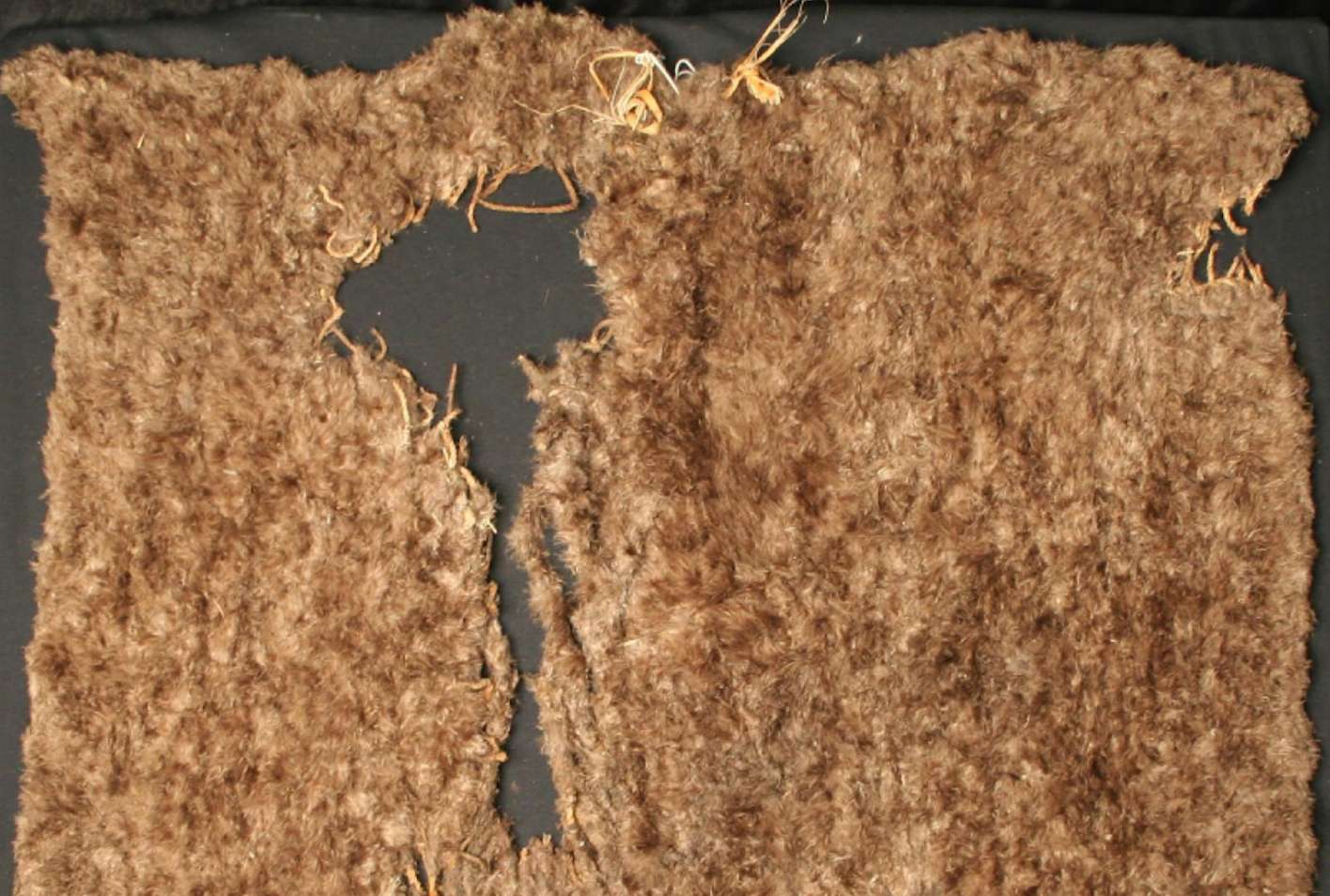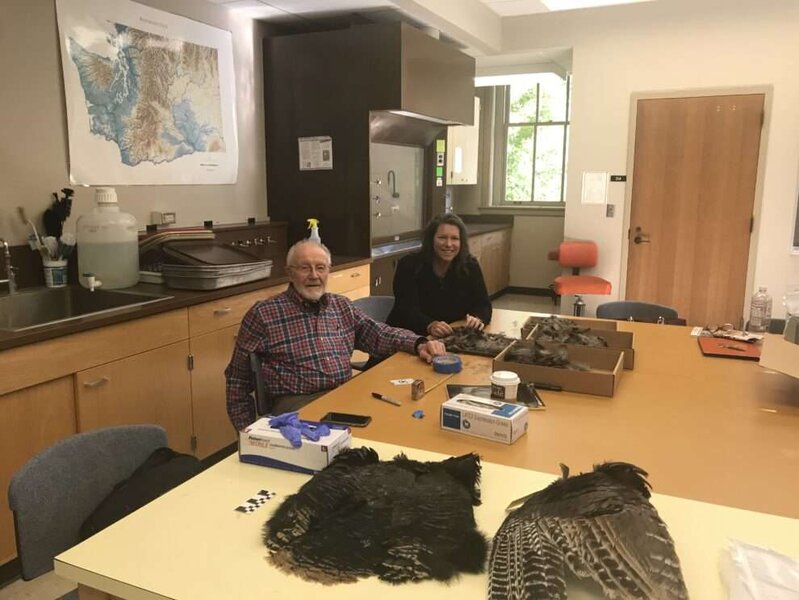Create a free profile to get unlimited access to exclusive videos, sweepstakes, and more!
Plucked! This Ancient Puebloan blanket was crafted with 11,500 turkey feathers

Somewhere in the American southwest some eight centuries ago, a half-dozen turkeys might have been severely shivering after having their feathers plucked to craft a thick blanket for Ancestral Pueblo tribes, unless of course they were already the centerpiece of a hearty harvest festival meal or simply relieved to have their annual molting season over.
Washington State University archaeologists recently inspected and analyzed a rare, 800-year-old turkey feather blanket measuring 39 x 42.5 inches from southeastern Utah to better understand how it was created. This comfy artifact is currently on public display at the Edge of the Cedars State Park Museum in Blanding, Utah.
In a new research paper published this week in Science Direct, the team detailed how their scrutiny revealed thousands of soft downy body feathers wrapped around 200 yards of yucca fiber cord to make the ancient blanket.
Domestic turkeys and feather blankets similar to the one studied first appeared in the archaeological record of the Upland Southwest (Colorado, Utah, New Mexico and Arizona) during the classic Basketmaker II period (B.C.E. 400—C.E. 500) of the Ancestral Pueblo tradition. These indigenous people were relatives of present-day Puebloans like Hopi, Zuni, and Rio Grande Pueblos.
“Blankets or robes made with turkey feathers as the insulating medium were widely used by Ancestral Pueblo people in what is now the Upland Southwest, but little is known about how they were made because so few such textiles have survived due to their perishable nature,” said lead study author Bill Lipe, emeritus professor of anthropology at WSU. “The goal of this study was to shed new light on the production of turkey feather blankets and explore the economic and cultural aspects of raising turkeys to supply the feathers.”
Textiles derived from turkey feathers woven inside a web of fiber warp cords were a common household item in this region that Ancestral Pueblos often settled at elevations above 5,000 feet, where winters were frigid and summer nights often cool. These warm turkey feather blankets would have been more long-lasting than ones made with rabbit skins and would have held up for many years.
“As Ancestral Pueblo farming populations flourished, many thousands of feather blankets would likely have been in circulation at any one time,” said co-author Shannon Tushingham, assistant professor of anthropology at WSU. “It is likely that every member of an ancestral Pueblo community, from infants to adults, possessed one.”
To accurately obtain a correct count, researchers reached out to legally compliant Idaho hide dealers for feathers from two wild Merriam's turkey pelts and estimated it would have taken between four and ten adult turkeys providing 11,500 feathers to make the blanket being investigated.
Another fascinating element of the study was that these 800-year-old turkey feathers used for cold-weather garments were probably painlessly harvested from live birds during their natural molting periods in the spring and fall, enabling a constant supply of feathers many times per year over a bird’s total lifespan.
“When the blanket we analyzed for our study was made, we think in the early 1200s C.E., the birds that supplied the feathers were likely being treated as individuals important to the household and would have been buried complete,” Lipe added. “This reverence for turkeys and their feathers is still evident today in Pueblo dances and rituals. They are right up there with eagle feathers as being symbolically and culturally important.”





























